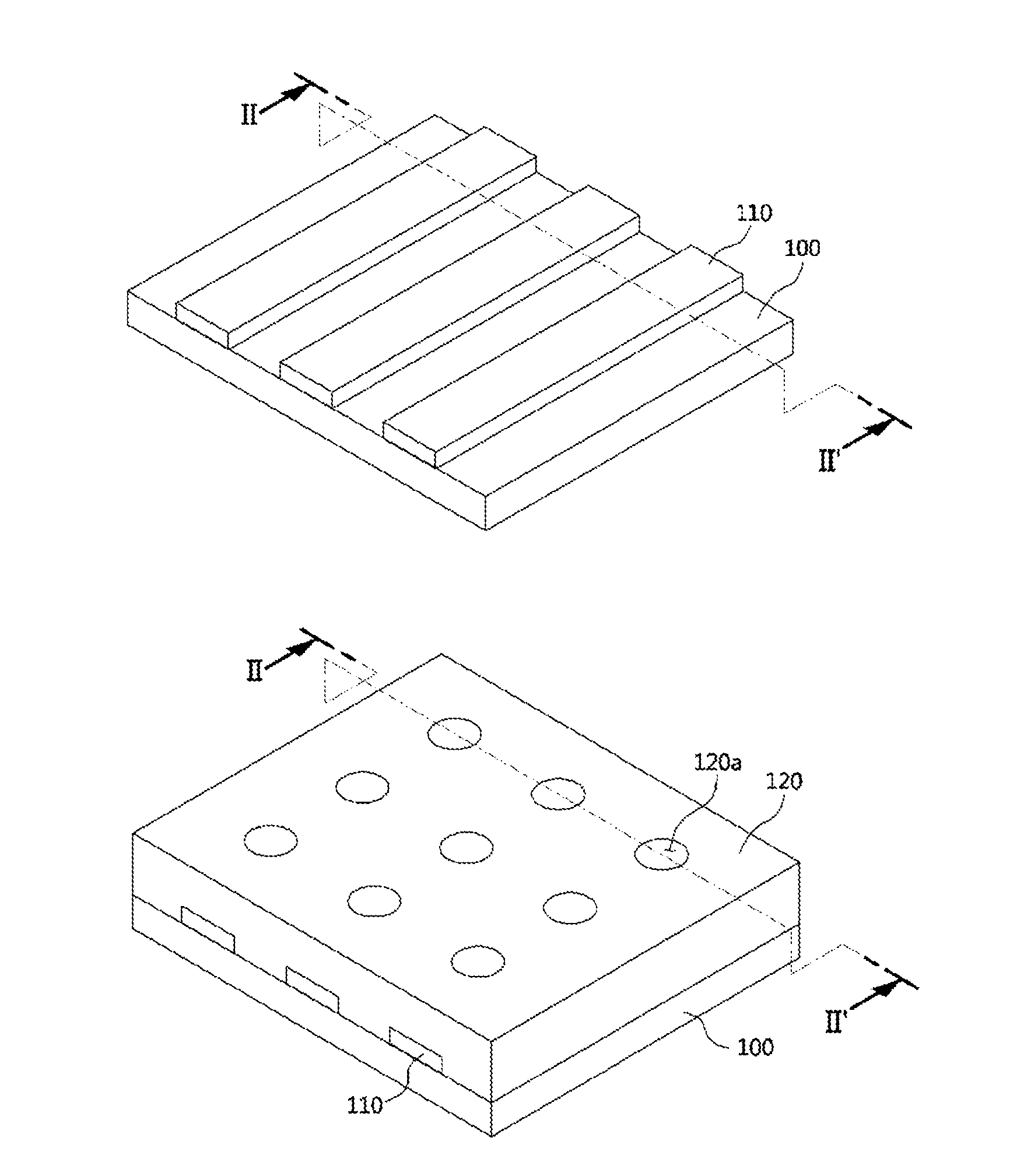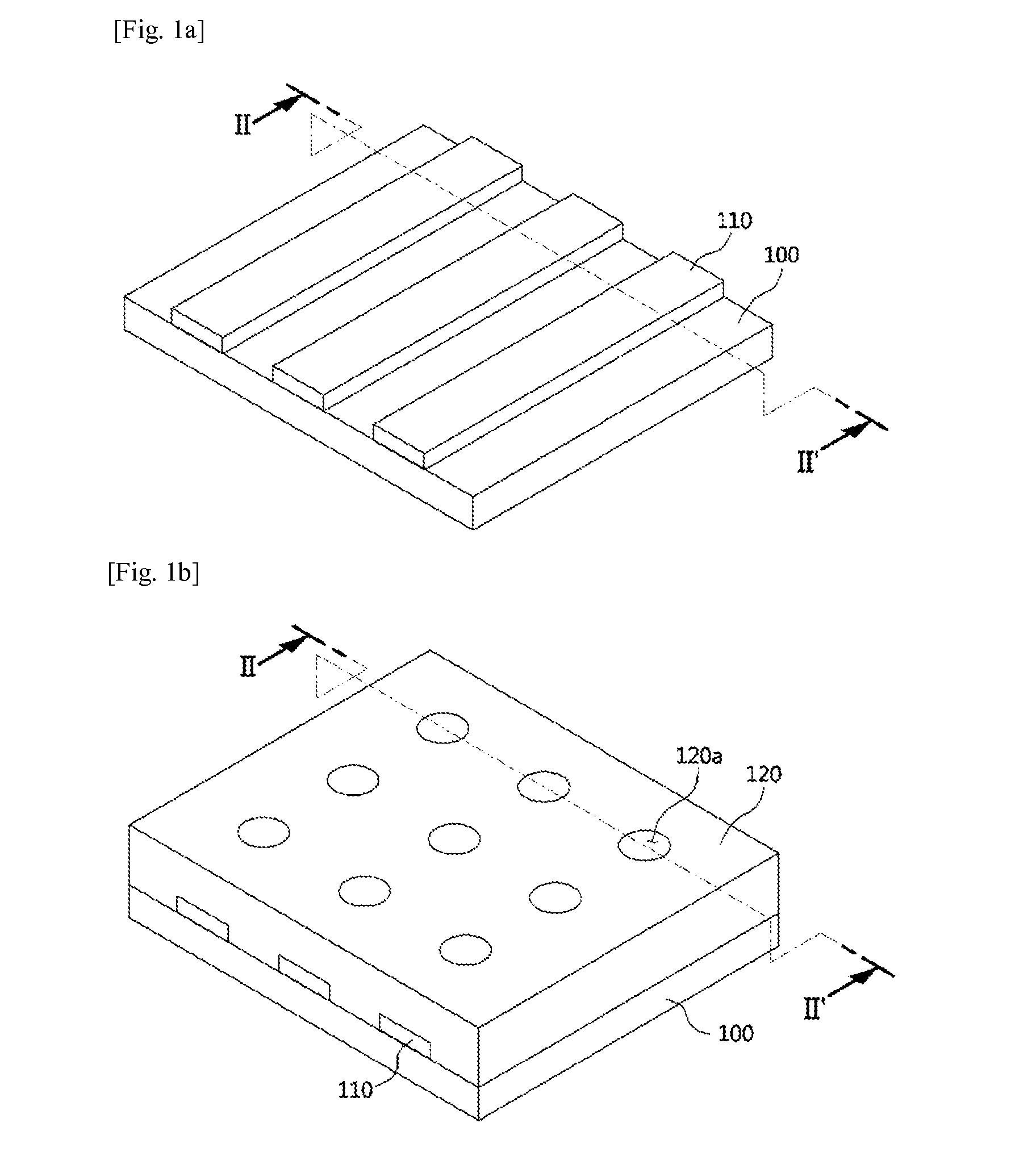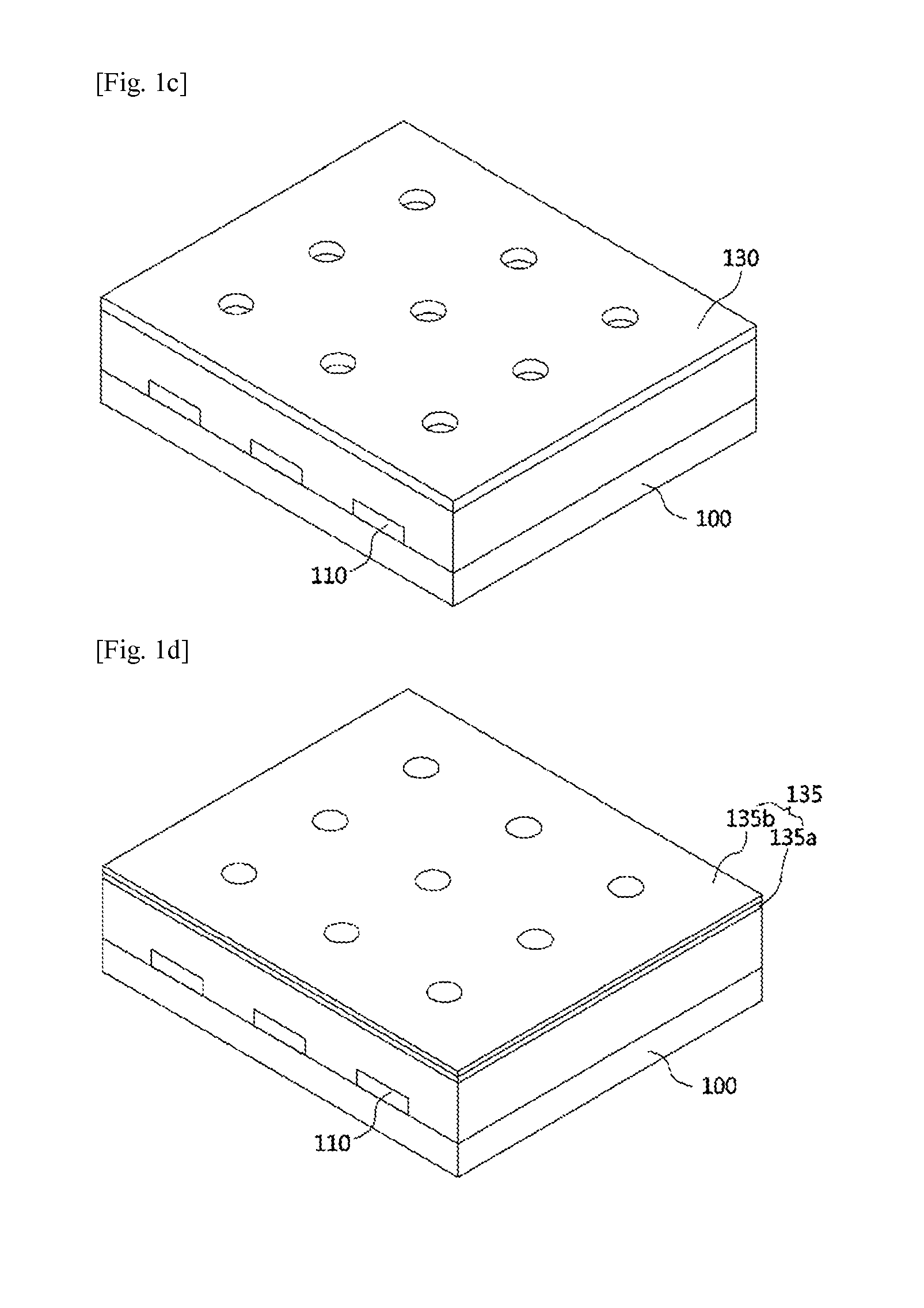Resistance change memory device having threshold switching and memory switching characteristics, method of fabricating the same, and resistance change memory device including the same
a resistance change memory and threshold switching technology, applied in the field of resistive change memory devices, can solve the problems of diodes not suitable and the transistor has a limit in size reduction, and achieve the effect of increasing process steps and high degree of integration
- Summary
- Abstract
- Description
- Claims
- Application Information
AI Technical Summary
Benefits of technology
Problems solved by technology
Method used
Image
Examples
example 1
Preparative Example 1
Preparation of Memory Switching Device
[0070]A 50 nm thick Pt layer was formed on a substrate to provide a first electrode by RF magnetron sputtering. Next, a silicon oxide layer was formed to a thickness of about 100 nm, and holes having a diameter of about 250 nm were formed in the silicon oxide layer to expose the Pt layer therethrough. On the Pt layer exposed through the holes and the silicon oxide layer, an Nb layer was deposited to a thickness of about 10 nm by sputtering, and subjected to oxygen treatment at an oxygen partial pressure of 50 sccm and at 500° C. for 10 minutes by RTA to form a metal oxide layer. Next, an about 40 nm thick W layer was formed on the oxygen treated Nb layer to provide a second electrode by sputtering.
example 2
Preparative Example 2
Preparation of Threshold Switching Device
[0071]A 50 nm thick Pt layer was formed on a substrate to provide a first electrode by RF magnetron sputtering. Next, a silicon oxide layer was formed to a thickness of about 100 nm, and holes having a diameter of about 250 nm were formed in the silicon oxide layer to expose the Pt layer therethrough. An NbO2-x layer was deposited to a thickness of 10 nm on the Pt layer exposed through the holes and the silicon oxide layer by reactive sputtering at 2 sccm and at 500° C. for 10 minutes. Next, an about 40 nm thick W layer was formed on the NbO2-x layer to provide a second electrode by sputtering.
example 3
Preparative Example 3
Preparation of Hybrid Device
[0072]A 50 nm thick Pt layer was formed on a substrate to provide a first electrode by RF magnetron sputtering. Next, a silicon oxide layer was formed to a thickness of about 100 nm, and holes having a diameter of about 250 nm were formed in the silicon oxide layer to expose the Pt layer therethrough. An NbO2-x layer was deposited to a thickness of 10 nm on the Pt layer exposed through the holes and the silicon oxide layer by reactive sputtering at 2 sccm and at 500° C. for 10 minutes. Then, the NbO2-x is exposed to air for oxygen treatment. Next, an about 40 nm thick W layer was formed on the NbO2-x layer to provide a second electrode by sputtering.
[0073]FIG. 7a is a graph depicting an analysis result of compositions of the respective layers of the memory switching device of Preparative Example 1, and FIG. 7b is a current-voltage curve of the memory switching device of Preparative Example 1.
[0074]Referring to FIG. 7a, the metal oxide...
PUM
 Login to View More
Login to View More Abstract
Description
Claims
Application Information
 Login to View More
Login to View More - R&D
- Intellectual Property
- Life Sciences
- Materials
- Tech Scout
- Unparalleled Data Quality
- Higher Quality Content
- 60% Fewer Hallucinations
Browse by: Latest US Patents, China's latest patents, Technical Efficacy Thesaurus, Application Domain, Technology Topic, Popular Technical Reports.
© 2025 PatSnap. All rights reserved.Legal|Privacy policy|Modern Slavery Act Transparency Statement|Sitemap|About US| Contact US: help@patsnap.com



